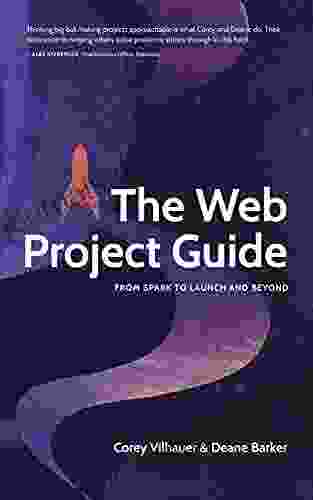Insider Secrets To Raising Healthy Koi: A Comprehensive Guide

5 out of 5
| Language | : | English |
| File size | : | 580 KB |
| Text-to-Speech | : | Enabled |
| Screen Reader | : | Supported |
| Enhanced typesetting | : | Enabled |
| Print length | : | 108 pages |
| Lending | : | Enabled |
Koi, with their vibrant colors and graceful movements, are a beloved addition to any pond. However, providing optimal care for these delicate creatures requires a deep understanding of their unique needs. This comprehensive guide unveils insider secrets to raising healthy koi, empowering you with essential knowledge for their well-being.
Understanding Koi Biology
To effectively care for koi, it's crucial to comprehend their biological makeup. Koi belong to the Cyprinus carpio species, classified as a hardy fish with a long lifespan of up to 50 years. They possess a unique ability to tolerate a wide range of water conditions, making them adaptable to various environments.
Water Quality Management: The Foundation of Koi Health
Water quality plays a pivotal role in koi health. Maintain optimal conditions by monitoring and adjusting the following parameters:
1. pH Levels:
Koi thrive in a slightly alkaline environment with a pH range of 7.2 to 8.5. Deviations from this range can cause stress and impair immune function.
2. Ammonia and Nitrite Levels:
Ammonia and nitrite are toxic compounds that can result from fish waste and uneaten food. Utilize a filtration system and perform regular water changes to keep these levels at zero.
3. Nitrate Levels:
Nitrate is a less harmful byproduct of the nitrogen cycle, but elevated levels can still contribute to stress and health issues. Aim for nitrate concentrations below 20 ppm.
4. Dissolved Oxygen Levels:
Ensure adequate dissolved oxygen levels in the water through aeration or plant life. Koi require a minimum of 5 mg/L of oxygen for optimal respiration.
Feeding for Optimal Nutrition
Proper nutrition is essential for koi growth and vitality. Provide a balanced diet that includes:
1. High-Quality Pellets:
Commercial koi pellets offer a convenient and nutritious option. Choose pellets specifically designed for koi and avoid feeding excessive amounts.
2. Live Food:
Live food, such as bloodworms, brine shrimp, and daphnia, provide variety and enrichment. However, limit live food intake to prevent potential parasite transmission.
3. Plant Matter:
Koi appreciate plant matter as part of their diet. Introduce aquatic plants like water lilies and duckweed to provide grazing opportunities.
Disease Prevention and Treatment
Maintaining a healthy environment minimizes disease risks, but koi can still encounter health issues. Familiarize yourself with common koi diseases and their treatments:
1. Bacterial Infections:
Bacterial infections can cause symptoms such as ulcers, fin rot, and dropsy. Treat with antibiotics prescribed by a qualified veterinarian.
2. Parasitic Infections:
Parasites like Ich, anchor worms, and gill flukes can infest koi. Diagnose and treat promptly using appropriate anti-parasitic medications.
3. Viral Infections:
Viral infections, such as koi herpesvirus (KHV),can be devastating. Prevention through biosecurity measures is crucial, as there are no effective treatments.
Quarantine and Biosecurity
Quarantine newly introduced koi for a minimum of two weeks before adding them to the main pond. This practice minimizes the risk of introducing disease. Furthermore, practice good biosecurity measures, such as:
1. Disinfection:
Use a koi-safe disinfectant to clean nets, equipment, and quarantine facilities.
2. Hand Hygiene:
Always wash your hands before and after handling koi to prevent disease transmission.
3. Avoiding Contaminated Water:
Avoid using water from outside sources, as it may contain harmful pathogens.
Seasonal Care
Adapting koi care to seasonal changes ensures their well-being throughout the year:
1. Spring:
With warmer temperatures, koi become more active. Increase feeding frequency and monitor water parameters closely.
2. Summer:
Monitor water temperature and provide shade during hot summer days. Ensure adequate aeration to maintain oxygen levels.
3. Autumn:
As temperatures drop, koi prepare for hibernation. Reduce feeding and gradually lower water temperature.
4. Winter:
Koi can overwinter in outdoor ponds in milder climates. Provide a deep enough pond to prevent freezing and consider using a heater to maintain a consistent temperature.
Additional Tips for Koi Health
1. Regular Health Checks:
Perform regular health checks to identify any potential issues early on. Observe koi for abnormal behavior, skin lesions, or any other signs of distress.
2. Pond Maintenance:
Maintain a clean and well-maintained pond by regularly removing debris, cleaning the filter, and performing water changes.
3. UV Sterilization:
Install a UV sterilizer to eliminate harmful bacteria and viruses from the pond water.
4. Salt Baths:
Occasional salt baths can help prevent and treat certain diseases and improve overall koi health.
Mastering the insider secrets of raising healthy koi empowers you to provide exceptional care for these magnificent creatures. By understanding their biology, managing water quality meticulously, providing a nutritious diet, and implementing effective disease prevention and treatment strategies, you can ensure your koi thrive in a vibrant and healthy aquatic environment. Remember, koi care is an ongoing journey that requires patience, dedication, and a genuine passion for these extraordinary fish.
5 out of 5
| Language | : | English |
| File size | : | 580 KB |
| Text-to-Speech | : | Enabled |
| Screen Reader | : | Supported |
| Enhanced typesetting | : | Enabled |
| Print length | : | 108 pages |
| Lending | : | Enabled |
Do you want to contribute by writing guest posts on this blog?
Please contact us and send us a resume of previous articles that you have written.
 Novel
Novel Page
Page Text
Text Story
Story Genre
Genre Library
Library Paperback
Paperback Newspaper
Newspaper Paragraph
Paragraph Sentence
Sentence Shelf
Shelf Bibliography
Bibliography Foreword
Foreword Annotation
Annotation Footnote
Footnote Scroll
Scroll Codex
Codex Library card
Library card Narrative
Narrative Biography
Biography Autobiography
Autobiography Memoir
Memoir Reference
Reference Encyclopedia
Encyclopedia Dictionary
Dictionary Thesaurus
Thesaurus Narrator
Narrator Resolution
Resolution Librarian
Librarian Borrowing
Borrowing Stacks
Stacks Archives
Archives Periodicals
Periodicals Scholarly
Scholarly Reserve
Reserve Academic
Academic Reading Room
Reading Room Thesis
Thesis Reading List
Reading List Theory
Theory David Son
David Son Kerry Bogert
Kerry Bogert Marife Montes Luna
Marife Montes Luna Jake Russell
Jake Russell Morgan Wonderly
Morgan Wonderly David Cox
David Cox Adam Lee
Adam Lee Michel Rosenfeld
Michel Rosenfeld Kate Saunders
Kate Saunders Peter Hazzard
Peter Hazzard Euromentravel Com
Euromentravel Com Joanne Wilke
Joanne Wilke Farley Granger
Farley Granger Emily Dickinson
Emily Dickinson Marion Clarion
Marion Clarion Gavin Aung Than
Gavin Aung Than Valerie S Goodwin
Valerie S Goodwin Paradygmlaw Institute
Paradygmlaw Institute Robert Lee Watt
Robert Lee Watt Adam D C Cherson
Adam D C Cherson
Light bulbAdvertise smarter! Our strategic ad space ensures maximum exposure. Reserve your spot today!

 Alex FosterThe Secret Wars of the CIA: Uncovering the Covert Operations that Shaped the...
Alex FosterThe Secret Wars of the CIA: Uncovering the Covert Operations that Shaped the... Derrick HughesFollow ·2.5k
Derrick HughesFollow ·2.5k Harvey HughesFollow ·11.7k
Harvey HughesFollow ·11.7k Diego BlairFollow ·4.8k
Diego BlairFollow ·4.8k Jean BlairFollow ·4.1k
Jean BlairFollow ·4.1k Edgar CoxFollow ·14.7k
Edgar CoxFollow ·14.7k Bret MitchellFollow ·16.2k
Bret MitchellFollow ·16.2k José SaramagoFollow ·18.7k
José SaramagoFollow ·18.7k Dan BellFollow ·14.9k
Dan BellFollow ·14.9k

 Devon Mitchell
Devon MitchellFiddle Primer for Beginners Deluxe Edition: Your...
Embark on an...

 Aldous Huxley
Aldous HuxleyAn Enchanting Journey into the Alluring World of Danielle...
Danielle Steel is an American...

 Darren Nelson
Darren NelsonThe Longhaired Boxer: Ed Malave and His Legacy in the...
Ed Malave, known...

 Alexandre Dumas
Alexandre DumasThe Tragic True Story Of A Mother Who Lost One Daughter...
No parent should...

 Colin Foster
Colin FosterHaunted Places In The American South: An Exploration of...
As the sun dips...
5 out of 5
| Language | : | English |
| File size | : | 580 KB |
| Text-to-Speech | : | Enabled |
| Screen Reader | : | Supported |
| Enhanced typesetting | : | Enabled |
| Print length | : | 108 pages |
| Lending | : | Enabled |












